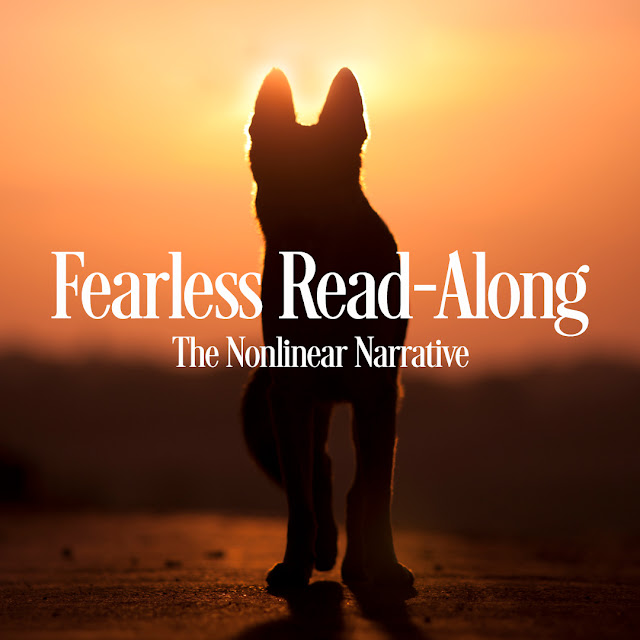Chapter One lays down a lot of foreshadowing, and Chapter Two ups the ante. By this point, it's very clear that something's gone down in the past between Mercy and Ava. But there are also lots of little hints about Ava's upbringing, the club's history, and even Tango's dark past. In a different sort of novel, this could merely be foreshadowing as a shorthand backstory. But this is me, and my favorite literary device is the nonlinear narrative structure.
You'd be hard-pressed to find one of my books that doesn't include flashbacks. (I think the Drakes are straight-up linear, so that's something.) The most common criticism of the "Then" and "Now" technique is that frequent or lengthy flashbacks disrupt forward momentum, and force readers to flip back because they've forgotten where the present-day story line left off before the flashback began. Valid criticisms, but criticisms I'm willing to risk because, for me, a linear narrative can just as easily be struck down by a case of "what's the point?" In a novel of this size and scope, a linear storytelling structure can start to feel like an endless slog.
With Fearless specifically, it was important to me that I show, explicitly and in detail, Mercy and Ava's first doomed romance when she was seventeen. Because it's taboo, and shocking, and ends badly, I felt like readers needed to walk through step-by-step with Mercy and Ava in order to understand just how much they mean to one another. Seeing it firsthand builds more empathy for their unlikely situation than summarizing it in a couple paragraphs. I could have started in the past, and written straight through to the present day, but I feel like that would have made the book feel longer and less accessible. Readers would go through that whole roller coaster with Mercy and Ava, be left sad and disappointed, then see there were four-hundred more pages to go in the book. I think lots of people, having experienced one denouement, would have set the book aside, and might not have returned to it.
By starting in the present day and introducing a juicy new conflict and a scary enemy, it establishes intrigue from the very first. Readers can then safely enjoy the large flashback portion of the book knowing that Ava and Mercy will reunite five years later. That they'll be back in one another's orbit, still drawn to each other, and with much more story to tell.
In this way, the beginning of the book hooks you in; the second part gives you the sordid history, so you'll understand why things are so dramatic now; then parts three and four carry us home. I genuinely can't imagine writing it a different way. I think the nonlinear narrative style allows you more leeway with backstory, rather than less. I think it makes the novel richer in the long run.


Fearless was recommended to me by Amazon. I loved every minute of their story. And I bought all your books on Amazon. What a find!!
ReplyDelete